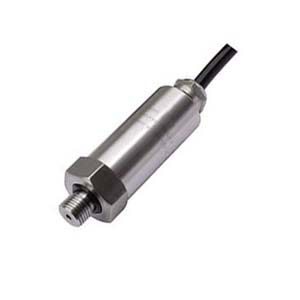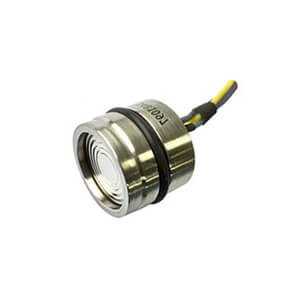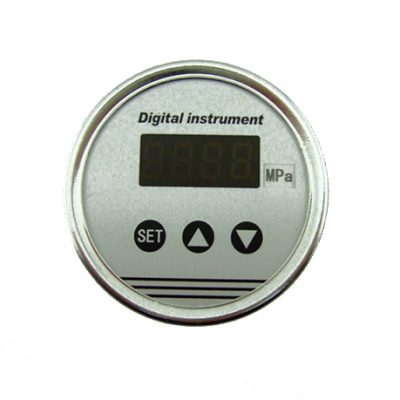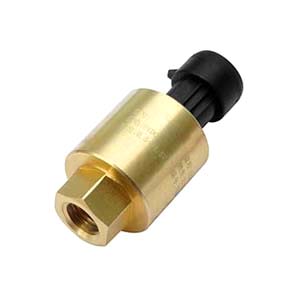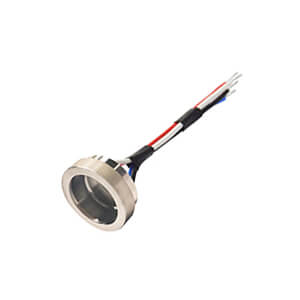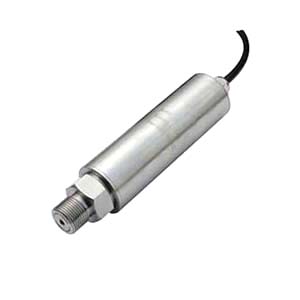What is pneumatic and hydraulic pressure sensor?
Pneumatic and Hydraulic sensors are designed to measure pressure in systems that use compressed air (pneumatic) or pressurized fluids (hydraulic).
Pneumatic pressure sensor: This type of sensor measures the pressure of gases, typically air, in a pneumatic system. Pneumatic systems are commonly used in automation, such as in manufacturing, for operating tools and equipment, and controlling valves or actuators. In these systems, air is compressed, and the pressure is used to transmit force or perform work.
Hydraulic pressure sensor: This sensor measures the pressure of fluids, typically oil or water, in a hydraulic system. Hydraulic systems use pressurized fluid to transmit power and perform tasks, such as lifting heavy loads, operating machinery, or controlling valves and actuators. These systems are often found in industrial applications, construction equipment, and vehicles.
Both pneumatic and hydraulic pressure sensors work by converting the pressure exerted by the gas or fluid in the system into an electrical signal that can be monitored and processed by control systems or data acquisition systems. The primary difference between these two types of sensors lies in the media they measure (gases for pneumatic sensors and fluids for hydraulic sensors) and the typical pressure ranges they are designed to handle.
What is the unique features only Pneumatic and Hydraulic sensor has?
Pneumatic and hydraulic pressure sensors are designed specifically to measure pressure in systems that use compressed air (pneumatic) or pressurized fluids (hydraulic).
Pressure range:
Pneumatic pressure sensors typically have lower pressure ranges compared to hydraulic sensors. Pneumatic systems often operate within the range of 0 to 150 psi (pounds per square inch), while hydraulic systems can have pressure ranges up to 10,000 psi or more. It’s crucial to choose a sensor with an appropriate pressure range for the system it will be used in.
Media compatibility:
Pneumatic sensors are designed to measure the pressure of gases, typically air, while hydraulic sensors measure the pressure of fluids, such as oil or water. Select a sensor compatible with your system’s medium to ensure accurate measurements and prevent damage.
Accuracy:
The accuracy of pressure sensors varies based on the sensing technology and specific sensor design. Choose a sensor with an accuracy level suitable for your application’s requirements. In general, hydraulic sensors may require higher accuracy levels than pneumatic sensors due to the higher pressures involved.
Output signal:
Pressure sensors can have different types of output signals, such as analog (e.g., 4-20 mA, 0-10 V) or digital (e.g., RS-485, CAN bus). Select a sensor with an output signal compatible with your control or data acquisition system.
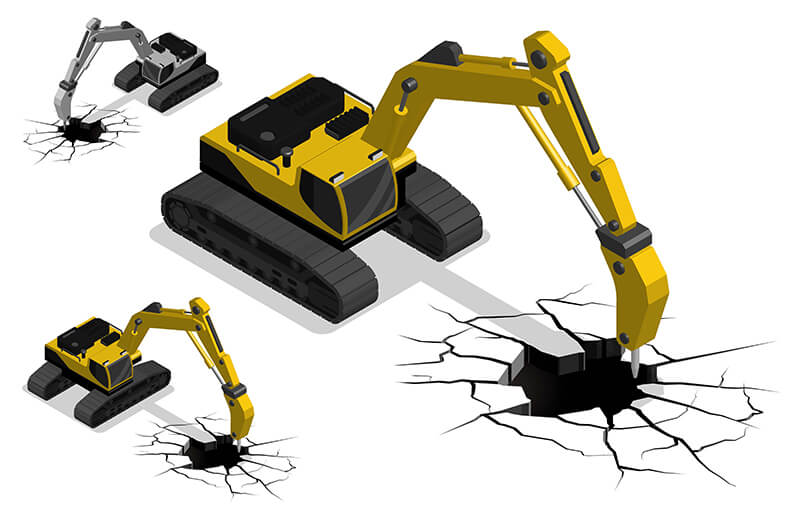
What are the applications for Pneumatic and Hydraulic pressure sensor
Compressed Air Systems
In the Industries like manufacturing, automotive, food and beverage, pharmaceuticals, and others, Pneumatic and Hydraulic pressure sensors can be used for Energy savings of up to 20-30%. It can be achieved by ensuring proper compressed air system pressure, as leakage rates increase significantly when the system pressure is unnecessarily high, except that, Pneumatic and Hydraulic pressure sensor can also do the jobs like:
- Energy optimization: Monitoring and maintaining the pressure within the desired range (e.g., 90-120 psi) helps to reduce energy consumption, as compressors run more efficiently.
- Extended equipment life: By preventing over-pressurization, pressure sensors reduce the risk of equipment damage or failure, leading to lower maintenance costs and longer lifespans.
- Improved production quality: Stable air pressure ensures consistent product quality by preventing fluctuations in pneumatic tools and machinery operation.
HVAC (Heating, Ventilation, and Air Conditioning) Systems:
Pneumatic and Hydraulic pressure sensor always be deployed in the industries including HVAC, commercial and residential buildings, data centers, hospitals, and other facilities requiring climate control.
- Indoor air quality: By continuously monitoring system pressure, sensors help maintain healthy air quality by ensuring proper ventilation and detecting issues like clogged filters.
- Energy efficiency: Accurate pressure measurement enables more efficient control of the HVAC system, resulting in reduced energy consumption and lower operational costs.
- Preventative maintenance: Sensors can detect pressure imbalances, alerting maintenance staff to potential issues like leaks or equipment malfunctions before they become critical.
- Regular filter maintenance, supported by pressure monitoring, can reduce energy consumption by 5-15% in HVAC systems, as dirty filters can increase energy use by up to 25%.
Pneumatic Control Systems:
Like industrial automation, process control, packaging, robotics, and other applications that rely on the precise regulation of gas pressure, pneumatic and hydraulic pressure sensor can contribute more in such applications.
- Enhanced process efficiency: Accurate and stable pressure measurements enable precise control of pneumatic systems, improving productivity and reducing waste.
- Increased safety: Proper pressure monitoring can help identify leaks or other issues, reducing the risk of accidents and ensuring worker safety.
- System reliability: Real-time pressure monitoring allows for timely maintenance and troubleshooting, preventing unexpected downtime and ensuring consistent performance.
- In an industrial automation setting, the implementation of precise pneumatic control systems can lead to a 10-20% increase in overall productivity.
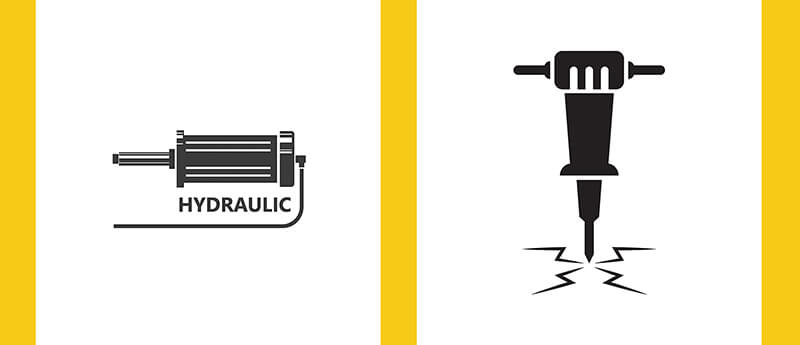
Top-3 heads up when using the pneumatic pressure sensor
Proper Sensor Selection:
Selecting a pneumatic pressure sensor with the appropriate pressure range can lead to energy savings of up to 20-30% in compressed air systems, as maintaining optimal pressure reduces leakage rates and energy consumption.
- Industry: All industries use pneumatic pressure sensors.
- Key Points:
- Choose the appropriate pressure range based on the specific application’s requirements, such as 90-120 psi for compressed air systems or application-specific ranges for pneumatic control systems.
- Select a sensor with suitable accuracy, considering factors like temperature and pressure fluctuations, which can affect the performance of the sensor.
- You also need to consider environmental factors such as temperature, humidity, and ingress protection, ensuring the sensor can withstand the operating conditions.
Regular Calibration and Maintenance:
Regular calibration and maintenance can help prevent up to 75% of sensor-related performance issues, ensuring accurate measurements and reliable system operation.
- Industry: All industries using pneumatic pressure sensors.
- Key Points:
- Regularly calibrate the pressure sensor to ensure accurate and reliable measurements, following the manufacturer’s recommendations or industry-specific guidelines. Perform routine maintenance, including cleaning and inspecting the sensor for damage, wear, or contamination. Replace the sensor when necessary to ensure optimal performance and prevent costly equipment failures or production downtime.
System Integration and Monitoring:
Real-time pressure monitoring and system integration can lead to a 10-20% increase in overall productivity in industrial automation applications by reducing unexpected downtime and improving process efficiency.
- Industry: All industries using pneumatic pressure sensors.
- Key Points:
- Properly integrate the pressure sensor into the system, ensuring correct installation, wiring, and compatibility with other components such as controllers or data acquisition devices.
- Monitor the system pressure in real-time to detect potential issues like leaks, equipment malfunctions, or over-pressurization, enabling timely troubleshooting and maintenance.
- Implement safety measures such as pressure relief valves or alarms to protect the system and personnel from potential hazards caused by pressure fluctuations or failures.
What technology is better for Pneumatic and Hydraulic pressure sensor
Several sensing technologies can be used for pneumatic pressure sensors, and each has its advantages and disadvantages depending on the application. Here are the three most common sensing technologies for pneumatic pressure sensors, along with their benefits, drawbacks, and use cases:
Piezoresistive Pressure Sensors:
Piezoresistive sensors typically offer an accuracy of 0.1% to 0.25% of full scale, making them suitable for most industrial applications.
- Advantages: High sensitivity, good accuracy, and cost-effective. Suitable for a wide range of pressures and compatible with most gases.
- Disadvantages: Sensitive to temperature changes, which may require compensation or calibration to maintain accuracy.
- Cases in use: Compressed air, HVAC, and general pneumatic control systems.
Capacitive Pressure Sensors:
Capacitive sensors typically offer an accuracy of 0.03% to 0.1% of full scale, making them ideal for high-precision applications.
- Advantages: Excellent long-term stability, low hysteresis, and low temperature sensitivity. Can handle low pressures and aggressive media.
- Disadvantages: Higher cost compared to piezoresistive sensors and may be susceptible to electromagnetic interference (EMI).
- Cases in use: Cleanroom applications, high-precision pneumatic control systems, and corrosive or aggressive gas monitoring.
Optical Pressure Sensors:
Optical pressure sensors typically offer an accuracy of 0.01% to 0.1% of full scale, making them one of the most accurate sensing technologies available.
- Advantages: High accuracy, excellent long-term stability, and immunity to EMI. Suitable for harsh environments and can withstand high pressure and temperature ranges.
- Disadvantages: Higher cost and more complex system integration compared to other sensor technologies.
- Cases in use: Medical equipment, aerospace applications, and EMI-sensitive environments.
In conclusion,
- Piezoresistive sensors are cost-effective and provide good accuracy (0.1% to 0.25% of full scale) for a wide range of pressures (0-10,000 psi) but are sensitive to temperature changes. They are widely used in compressed air systems and HVAC systems.
- Capacitive sensors offer excellent long-term stability and accuracy (0.03% to 0.1% of full scale) for low-pressure applications and aggressive media. They are ideal for cleanroom applications and high-precision pneumatic control systems.
- Optical sensors provide high accuracy (0.01% to 0.1% of full scale), EMI immunity, and are suitable for harsh environments, making them suitable for medical equipment and aerospace applications.
What is the limitation and risk
Some limitations and risks associated with pneumatic and hydraulic pressure sensors, along with examples and numbers go as below, you can check the details in following:
Limited pressure range:
Each sensor has a specific pressure range it can handle. Exceeding this range may damage the sensor or result in inaccurate readings. For example, using a sensor with a maximum pressure range of 1,000 psi in a hydraulic system operating at 2,000 psi could damage the sensor or provide inaccurate measurements.
Temperature sensitivity:
Temperature changes can affect pressure sensors, which may lead to inaccurate readings if not adequately compensated. For instance, a piezoresistive sensor with a temperature coefficient of 0.01% per °C may have an error of 1% if the temperature changes by 100 °C.
Media compatibility:
The materials used in the sensor must be compatible with the media (fluid or gas) it will be exposed. Incompatibility can lead to corrosion or degradation of the sensor, resulting in premature failure. For example, using a sensor with a brass housing in a corrosive fluid may result in corrosion and a shortened lifespan.
Vibration and shock sensitivity:
Some pressure sensors are sensitive to mechanical vibrations and shocks, which can affect their accuracy or lead to damage. For example, using a strain gauge sensor in an environment with high vibration levels may require additional damping or isolation measures to maintain accuracy.
Installation errors:
Incorrect installation, such as over-tightening or misalignment, can cause sensor damage or inaccurate readings. For instance, over-tightening a sensor with a torque rating of 20 Nm by applying 30 Nm of torque can damage the sensor’s housing or internal components.
Electrical interference:
Pressure sensors are susceptible to electrical noise and interference, which can affect the accuracy of the output signal. For example, running sensor cables parallel to high-voltage power lines may introduce noise, leading to unstable or inaccurate readings.
Contamination:
Dirt, dust, or other contaminants can cause inaccurate readings or sensor damage. For example, a capacitive sensor exposed to dust particles may experience a change in capacitance, resulting in incorrect pressure measurements.
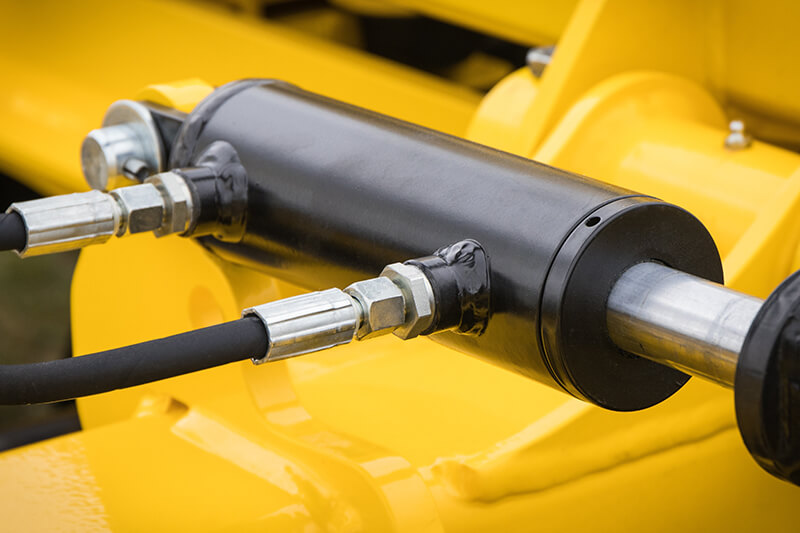
Wrap up
Pneumatic pressure sensors are vital components in various industries, such as manufacturing, automotive, HVAC, semiconductor, and aerospace. Three common sensing technologies used in these sensors are piezoresistive, capacitive, and optical. Each technology has advantages and disadvantages, making it suitable for specific applications.
Selecting the appropriate sensing technology for a pneumatic pressure sensor depends on the specific application and industry requirements. Users can make informed decisions for optimal system performance by comparing these technologies.

